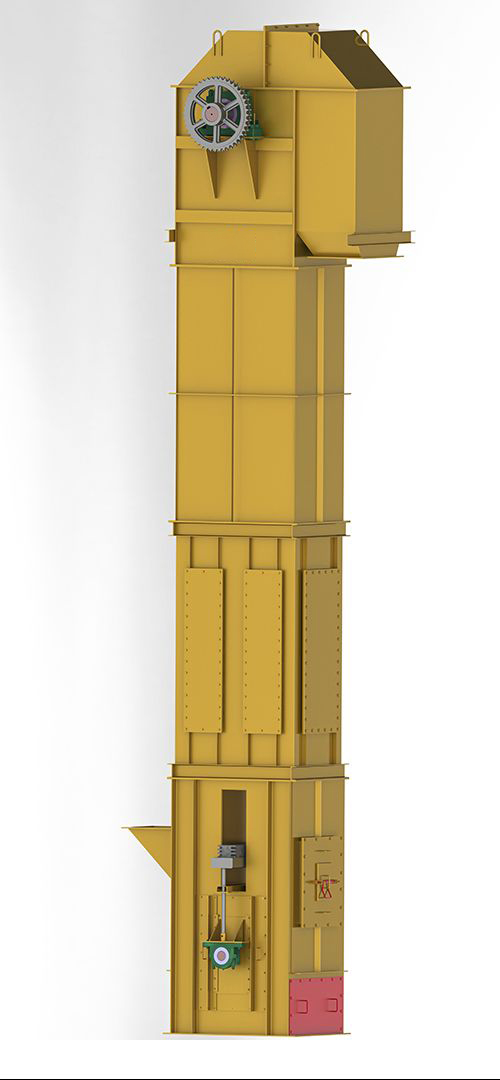
Bucket Elevator
Bucket elevators are used for continuous vertical lifting of powders, granules and small lumps and consist of a series of buckets attached to belts or chains with pulleys or sprockets at the top and bottom of the unit and buckets in the housing or Enclosures to contain material, bulk material is loaded into each bucket as the bucket moves through the entry point. The bucket elevator is widely used in feed mills, flour mills, starch factories, grain depots and other places of various scales to lift bulk materials.
The hopper scoops up the material from the storage below. As the conveyor belt or chain rises to the top, it turns downward around the top wheel, and the bucket elevator pours the material into the receiving slot. The belt of belt-driven bucket elevator generally adopts rubber belt, which is mounted on the lower or upper driving drum and the upper and lower reversing drum. The bucket elevator with chain drive is usually equipped with two parallel transmission chains, with a pair of transmission sprockets on or below and a pair of directional sprockets on or above. Bucket elevators are usually equipped with organic shells to prevent dust from flying in bucket elevators.
- Overview
- Benefits
How To Choose A Bucket Elevator?
Traction member: According to the material temperature, humidity, viscosity, particle size, loose density, and abrasiveness, there are three types of plate chain type, ring chain type, and belt type.
Overall height of equipment: Determine the lifting height according to the customer’s actual foundation conditions and lifting requirements, and then determine its total height (the total height is the lifting height plus the height of the head and base)
Drive device: Y series motor + reducer with backstop (motor power over 18.5KW, hydraulic coupling is required)
Bucket speed: The bucket speed of high-temperature materials and abrasive materials is less than 0.3m/s, and the bucket speed of cohesive materials is 0.5~1.2m/s.
Bucket capacity: Calculated by the horizontal bucket capacity, generally take 0.75%~0.85% of the horizontal bucket capacity to calculate the lifting amount during work.
- High efficiency improvement
- No dust or material
- Wide range of promotion
- High operational reliability
